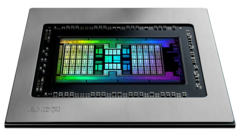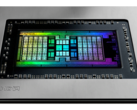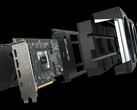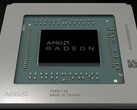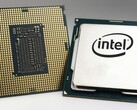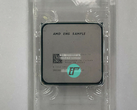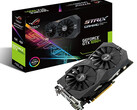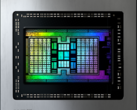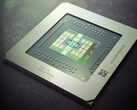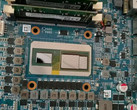It's been a few months since new generation GPUs from AMD and NVIDIA have been made official, but supply constraints show no signs of improving with cards from both vendors still being out of stock or sold at inflated prices. While that's on the market side of things, the R&D for next generation GPUs is pretty much underway and we are now getting to learn some new tidbits about AMD's RDNA 3 and NVIDIA Lovelace.
This information comes via RedGamingTech citing sources supposedly having insider knowledge of these developments. According to the publication, AMD seems to have set an internal performance target for RDNA 3 as 2.5x that of RDNA 2 (flagship vs flagship). RedGamingTech's sources also seem to suggest that RDNA 3's ray tracing performance will be more "NVIDIA like".
RDNA 3 is expected to be based on a chiplet multi-chip module (MCM) design at least when it comes to the higher-end SKUs, Navi 31 and Navi 32. Navi 33, on the other hand, is expected to be monolithic. Just like the Ryzen CPUs, RDNA 3 will sport GPU dies and an I/O die. Rumors so far suggest that the flagship Navi 31 SKU will have 160 compute units (CUs) i.e. two chiplets of 80 CUs each.
As to why Navi 33 would continue with a traditional monolithic design is not yet clear. One reasoning could be that it has lesser number of CUs, which means there is space for fitting the I/O components as well on the same die.
RedGamingTech also mentions that RDNA 4 is "coming along rather well" and that its chiplets will function differently compared to RDNA 3, but that's about it for now.
NVIDIA, too, is not going to rest on its laurels either. In fact, NVIDIA seems to be aware of AMD's internal goals for RDNA 3, which is apparently in line with its own estimates. We've been hearing reports that the upcoming Lovelace AD102 GPU will feature a whopping 18,432 CUDA cores.
Unlike Hopper, Lovelace will not be implementing an MCM design; the 5 nm part is expected to bring improvements to cache, clocks, and other architectural changes. NVIDIA is also keeping a close watch on Intel's Xe GPU as the latter is reportedly shaping up to a good competitor in terms of ray tracing.
All said and done, we will not be seeing either RDNA 3 or Lovelace this year. That is understandable as current launches themselves seem nowhere in sight on store shelves. The likely target for RDNA 3 launch, therefore, seems to be H1 2022, but this is just speculation for now.


